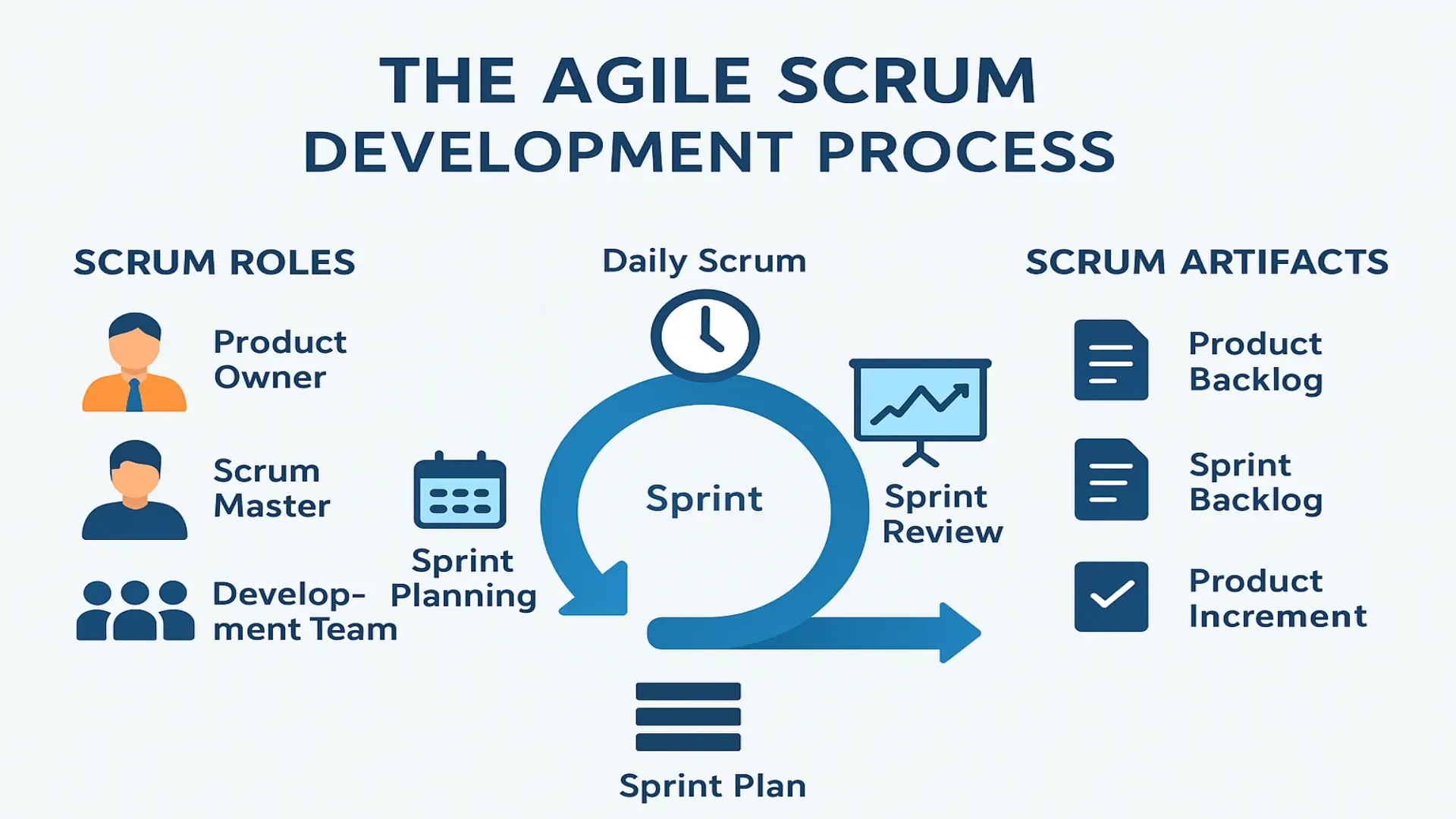How Teams Benefit from the Manifesto for Agile Software Development

AI Generated. Image Credit: OpenAI’s ChatGPT
Table of Contents
- The Manifesto in a Nutshell
- Concrete Benefits for Teams
- Challenges, Misconceptions, and How to Overcome Them
- Practical Tips for Teams to Leverage the Manifesto
- Conclusion
The Manifesto for Agile Software Development changed the method teams develop software. The document was published in 2001, and introduced a new way of thinking for teams founded on values and principles. It emphasized the people, flexibility and outcomes, instead of rigid rules and lengthy documents.
The manifesto still helps teams all over the world. It assists them in managing the complexities of change, enhance communication and create superior software. In the modern world of software development, the manifesto isn’t just significant, it’s essential.
1. The Manifesto in a Nutshell
The Agile manifesto for software development comprises 12 principles and four values. These aren’t strict guidelines. Instead, they provide teams with the freedom and direction to operate in ways that are logical.
The 4 Core Values
- People and interactions with processes and tools.
- Working software over comprehensive documentation.
- Collaboration with the customer during contract negotiation.
- Reacting to changes following an established plan.
The values of these teams remind them that outcomes and people matter more than paper or rigid schedules.
The 12 Principles
The 12 guidelines guide teams to regular delivery, teamwork and aptitude. They advocate simplicity, regular evaluation, and consistent speed. These principles help to live up for the ideals and assist teams to improve each step of the process.
Custom AI Software Development Solution For Enterprises
Why Teams Need a Guiding Manifesto
Software projects are often amidst complex issues, changing goals and evolving customer requirements. Without a plan teams can lose their concentration or focus on the wrong places. The manifesto for Agile Software Development gives teams the clarity they need.
A Shared Language
If you follow the guidelines that teams and stakeholder groups share the same goal. Everyone understands the underlying theme is collaboration, flexibility and the value. This common language helps eliminate any confusion and allows for a better alignment of efforts.
A Culture Shift
The manifesto also transforms cultural norms. Traditional methods used to be top-down control. Agile replaces this with trust, autonomy and collaboration. Teams feel supported and not constrained, which boosts the motivation and spark of creativity.
2. Concrete Benefits for Teams
Better Collaboration and Communication
The importance of “individuals and interactions over processes and tools” places the needs of people first. This strengthens teamwork.
- Teams depend on real conversations, not lengthy emails or lengthy documents.
- Collaboration helps solve problems faster and greater trust.
Increased Adaptability and Flexibility
The manifesto is supportive of the concept of change. In response to changes teams can adjust to shifts in goals. This helps keep projects on track and minimizes the amount of effort wasted. Teams are relevant no matter the conditions change.
Faster Feedback Loops and Improvement
Agile teams can deliver their work by small acts. Feedback arrives quickly, not waiting for months. This allows teams to fix problems before they get bigger and constantly enhance their work. Reflection also helps teams think and grow together.
Higher Quality and Lower Risk
Software that works is the main aim. Through frequent delivery teams show that they are making progress and find errors more quickly. Minor changes can reduce risks, making projects more efficient and more secure.
Transparency and Shared Visibility
Agile values openness. Members of the team, stakeholders and managers are able to see the real improvements. In lieu of waiting on reports they receive updates during standups or reviews. Transparency helps build trust among the entire team.
Team Empowerment and Motivation
Self-organizing teams is a fundamental concept. When teams are respected, they can take complete responsibility for their tasks. This confidence in control boosts morale and accountability. People are more satisfied with their achievements.
Predictability in Cost and Schedule
Agile utilizes timeboxed sprints. This helps create a rhythm and aids in forecasting. Although not perfect, it provides teams a method to evaluate effort, costs and delivery timeframes. With time, teams become more precise.
3. Challenges, Misconceptions, and How to Overcome Them
Misconception: Agile Has No Process
An often-repeated myth states that agile does not mean the absence of discipline or plan. However, the reality is quite different. Agile is a good way to encourage structure,, but it only works when it provides value. It avoids rules that are rigid and can slow development.
Challenge: Resistance to Change
The decision to adopt to the Agile Manifesto for software development can be a challenge. Certain teams and leaders prefer the old ways of working. Some are worried that they will lose control. The best solution is to start small, demonstrate the benefits, then increase.
Overcoming Barriers
Teams can benefit from the power of coaching, retrospectives as well as leadership support to facilitate the process of transition. It takes time to change However, with patience agile practices can become part of the organization’s culture.
4. Practical Tips for Teams to Leverage the Manifesto
Begin with the values
Conduct a workshop in which your team members discuss these four values. Then, connect each value with real-world instances in your project. The manifesto is more meaningful and simple to follow.
Apply Principles Step by Step
If you don’t want to implement all 12 principles simultaneously concentrate on just only one or two. For instance, start with regular delivery. Once your team is comfortable with the process, you can add a second principle such as customer collaboration.
Reinforce the message with Agile Ceremonies
Reviews of the Scrum process, retrospectives and daily stand-ups bring the manifesto into life. These events keep the focus on feedback, communication, and continuous improvement. They incorporate principles into every day work.
Track Metrics for Growth
Simple metrics can be used to assess the progress made. Quality, speed and customer satisfaction are all excellent indicators. Monitoring them will show that the team is adhering to the guidelines efficiently.
Why the Manifesto Still Matters Today
The world of software is constantly evolving. Frameworks and tools are released each year. Yet, the advantages that agile software development are the same. Teams that emphasize collaboration, flexibility and value delivery are successful regardless of the tools they employ.
The manifesto is a solid foundation. It aids teams to face new issues without losing sight what is most important–people and outcomes.
Conclusion
The Manifesto for Agile Software Development continues to guide teams toward better results. Its values and principles deliver clear benefits like stronger collaboration, faster feedback, higher quality, and team empowerment.
The manifesto is not a rulebook. It is a flexible guide that helps teams adapt and thrive. For your team, the first step is small: pick one value or principle and start applying it. Over time, those small changes will transform how your team works and delivers. If you want to unlock the full potential of agile, partnering with the right software development company can make the journey smoother and more impactful.









